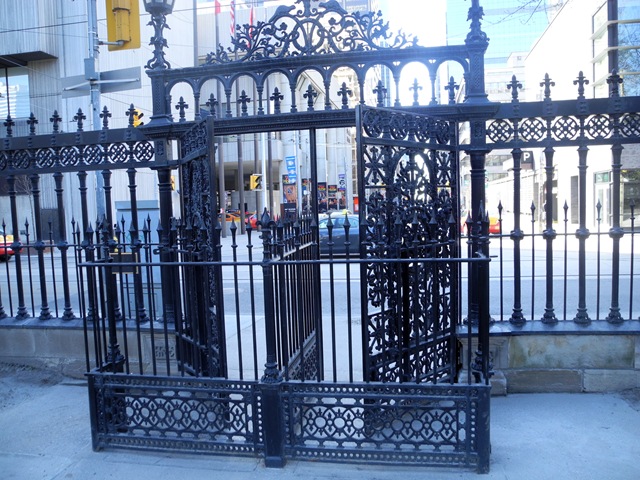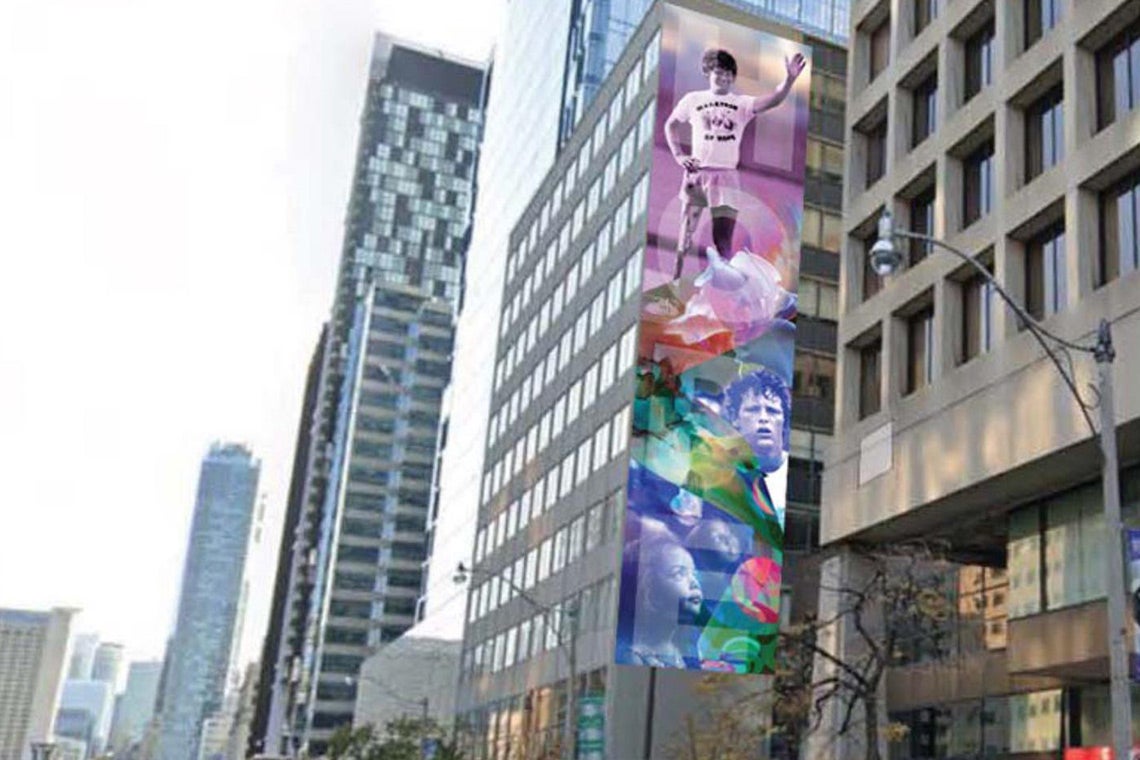W. K. Lis
Superstar
Meanwhile...
|
|
|


Public asked to help choose among five Terry Fox murals

Public asked to help choose among five Terry Fox murals - Streeter
The grey line of towers along University Avenue are about to get some colourful larger-than-life artwork to commemorate Terry Fox's run.streeter.ca
City of Toronto survey page for the 5 potential mural options:
- Terry Fox Tribute Mural
s.cotsurvey.chkmkt.com
View attachment 358138

Meanwhile...
Not related to the Terry Fox mural and regardless of the final outcome of the University Ave. make over I hope the Osgoode Hall grounds are finally opened up. It is one of the most beautiful public spaces/buildings we have but, unfortunately it's hidden behind the old heavy barrier fence and poorly placed trees. Meanwhile the sidewalk along the south side of OH is too narrow to accommodate pedestrian traffic. Seems to me the fence could be moved north to open up the sidewalk and also expose beautiful OH.
I like it as it is, actually. It's a historic fence, and the lawn is a quiet oasis and one of those few little secrets left downtown. I will not enjoy the Ontario Line construction there and the permanent encroachment with the station box.
On May 23, 1865, the firm of Cumberland and Storm received the contract for the construction of a cast iron fence around Osgoode Hall. The casting of the fence began in 1866, in the St. Lawrence Foundry. Even in those years, Toronto was a thriving industrial centre where raw materials and skilled workmen were readily at hand. The foundry was on Front Street, its grounds extending as far north as King Street, between Berkley and Parliament Streets. The firm produced cast iron for industrial and architectural purposes, such as the staircases of the Old City Hall and Victoria College. The stone for the footings of the fence were quarried from near Georgetown by the firm of Ramsey and Farquar. The installation of the foundations, the cast iron fence, and the gates were completed in Confederation year –1867.
The gates were designed after a type that at one time were common throughout Britain. Known as “kissing gates,” they consisted of two panels placed into the enclosure in a “V”-shape, with a small opening at the narrow end of the “V”. To pass through the gate a person moved around the panel to travel from one side of the gate to the other. If another person were passing through the gate in the opposite direction, at one point they directly faced each other, providing an excellent opportunity for kissing.
Anyone who has passed through the 20-inch opening of an Osgoode Hall gate can readily perceive the opportunities for a kiss. However, tradition says that the gates on Queen Street, with their narrow openings, were designed to prevent cows from passing through. This might have been a possibility when the east wing of the hall was constructed in 1829, as the site was to the northwest of the town of York. However, by the year 1866, the city had grown considerably and extended into the area where Osgoode Hall was located. The design was likely an attempt to mimic the styles of Mother Britain.


Summary |
This report recommends that City Council approve the alterations proposed for the heritage property located at 330 University Avenue (designated under Part IV of the Ontario Heritage Act). The proposal is for replacement of three matching "Canada Life" illuminated fascia signs on the north, west, and south elevations of the tower of the Canada Life Building at 330 University Avenue. |

The design for a Terry Fox mural that will grace the University of Toronto's Rehabilitation Sciences Building has been selected by a panel that includes the Canadian hero’s younger brother and niece.
The winning submission, by Toronto artists Alexander Bacon and Que Rock, depicts Fox smiling and waving. The mural's colours symbolize the different types of cancer research supported by the Terry Fox Foundation, while an image of a bison pays homage to Fox's Métis heritage. The word “hope” emblazoned vertically in block letters references his cross-country “Marathon of Hope” to raise money for cancer research.
“We are honoured to have had our design concept selected by the Advisory Committee for this landmark commission,” the artists said in a statement. “Terry Fox is an international hero, a timeless symbol of selflessness and resilience against all odds. We are so proud to celebrate this global icon through our mural.”
To be painted this summer at 500 University Avenue, the mural is expected to be eight storeys tall and will overlook part of the route Fox took through downtown Toronto more than 40 years ago. Upon his arrival in Toronto, he told the Globe and Mail that being a patient in a cancer ward was tougher than running across the country. "People I saw who had cancer set an example. I've got to be strong, I can't give up," he told the paper.




